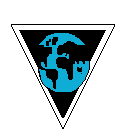The text-based nature of tools like e-mail, fax, and shared databases may seem like a hassle to people who prefer to talk and think things through at the same time, yet texts play a unique role in global projects. Texts enable people to align intent and interpretation across culture, language, and business contexts. Think for a moment about the times you have printed out an e-mail so that you could discuss its meaning with a colleague. Texts give us some distance from the immediate interaction allowing time to reflect and analyze. Texts also bring past agreements into the present for reevaluation. Imagine an audio conference with three project contributors in different countries. Their work has slipped 3 weeks off the time line and they are discussing the situation. All three believe they had an agreement about how to conduct a quality review; yet that review is now holding up the overall project. They spend an hour sorting out each other’s understanding of their previous agreement—which was not documented. Frustration mounts as the time passes. What would be different about this scenario if all three contributors had a couple of short e-mail messages documenting their earlier agreement? Instead of a frustrating trip backward arguing about their different understandings of a past agreement, they can analyze the text and work toward solutions to the current situation. Align Business Practices Across Global Sites The dialogue around enterprise-wide standards versus site and functional uniqueness is never-ending in many organizations. Project-based environments open new directions and possibilities for this conversation. Senior managers traditionally attempt to create efficiencies through standardizing practices across the organization. Still, people working within a particular function or site develop their own interpretation of business practices suited to their particular conditions. People coming to work on complex projects bring these distinct interpretations with them. An R&D project had contributors scattered across three sites. A design review is standard business practice within this organization. The contributors at one of the sites interpreted this to mean a two hour "once over" with perhaps a few clarifying questions. People at another site conducted an elaborate design check requiring about a week. Contributors at the third site distributed design specifications via e-mail, allowed two days for any comments, and called meetings as needed. The ability to align these various interpretations is an essential practice in creating a collaborative environment. This means that, based on the particular charter and desired business outcomes of a project, standards may vary. An odd paradox exists that on the one hand standardizing business practices realizes the clearest benefits in projects, and on the other, different projects will need different standards. In practical terms, this means that contributors working on the same process must agree to a given standard and take it for sign off to the project leader and other contributors. Acknowledge Whole Project Accomplishments One of the greatest challenges for global project teams is to develop a sense of connection across distance, cultures, and business contexts. One way to encourage this connection is to acknowledge whole project accomplishments. Clear goals and business outcomes form a unifying foundation for collaborative work in projects. Therefore, whole project milestones that project leaders link directly to goals and business outcomes serve as unifying motivators for all contributors. Project time lines and other project management tools are important and vital aspects of success. Yet, these tools break down projects into discreet tasks that sometimes obscure the forest for the trees. When milestones are based on discreet actions, they become motivating only for the contributors involved in those tasks. Recognizing individual accomplishments is important, and it does not serve to connect and motivate people throughout a dispersed project team. As a compliment to milestones based on discreet actions, take advantage of the ”wholistic knowledge” generated in the project to create milestones separate from the project time line. Since complex projects draw people from many different functions, a person's particular expertise may not be called upon until a specific time in the project. People scattered in different countries and locations often feel isolated and uninvolved. Keeping everyone linked into the big picture keeps contributors aligned and connected. Conclusion People are coming to see the project as a crucial environment for marshaling and spreading knowledge across an organization. The complementary skills and practices needed to generate knowledge are not located in one country or culture. Now that the technology infrastructure is in place and growing, global projects are quickly becoming the norm. Project leaders who can encourage and establish effective collaborative practices across distance, culture, and business contexts will deliver the results and prosper. References Ancel, David. An Interpretive Approach to the Mediation of Culture and Technology in the Global Workplace. Doctoral Dissertation: University of San Francisco, 1995 Nonaka, Ikujiro and Hirotaka Takeuchi. The Knowledge-creating Company: How Japanese Companies Create the Dynamics of Innovation. New York: Oxford University Press, 1995 O’hara-Devereaux, Mary and Robert Johansen. GlobalWork: Bridging Distance, Culture & Time. San Francisco: Jossey-Bass, 1994 Schrage, Michael. No More Teams: Mastering the Dynamnics of Creative Collaboration. New York: Doubleday, 1989 |

